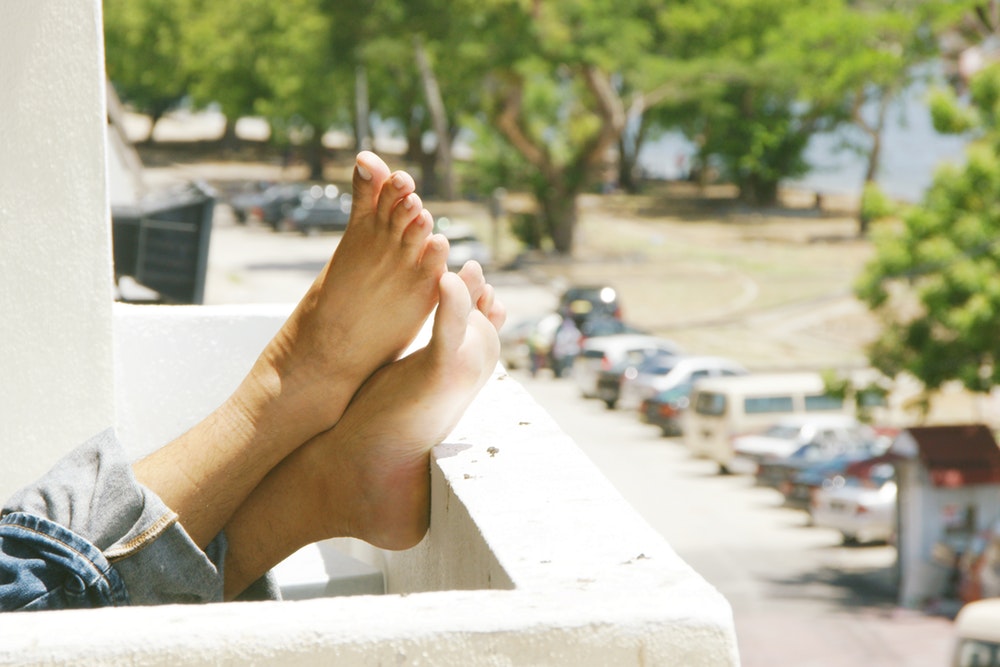Splayed toes are a foot defect in which the tendons and ligaments that hold the toes of the foot together are relaxed so that the toes spread apart. In normal movement the big toe bears the most weight. But in the case of splayed foot digits, the weight bearing shifts from the big toe to the second or third toe. So the second and third toes tend to move apart as they bear more weight and the whole foot becomes splayed.
Persons with severe splayed feet have difficulty walking. They generally experience pain while walking and standing as a result of their body weight. But, the pain usually disappears when resting or when the weight on the foot is relieved by using a corrective tool for splayed feet.
Table of Contents
What causes this condition?

It is not known exactly what causes splayed toes. But medical specialists agree that the condition results from many years of improper strain on the foot. The strain can be due to obesity, high heeled shoes, ill-fitting shoes or any conditions that affect a person’s natural gait. Such conditions can include paralysis, injuries, weak ligaments and bone diseases.
Over time, the transverse bulge of the foot disappears. Then the toes spread out as the forefoot broadens.
The disease will often occur in the second half of life if it is caused by being overweight. However, instances where children are affected have also been reported.
Besides the physical causes of the disease, you should know that splayed toe digits are hereditary. Your parents’ genes may be to blame for the condition.
What are the symptoms of splayed foot digits?
People with severe splayed foot have difficulty walking. They generally experience pain while walking and standing as a result of their weight. The pain usually disappears when resting or when the weight in the foot is relieved.
How to treat splayed foot digits
It is always advisable to seek the services of a specialist if splayed toes causes you some discomfort. A specialist will take you through an interview and a physical examination to establish a diagnosis. They will then give you an appropriate treatment which could either be a surgical or non-surgical therapy.
Some of the common non-surgical therapies that help to relieve pain from this condition are:
- Using a foot exercise machine to strengthen the calves, ankles and foot muscles. This helps to alleviate the pain and discomfort that often comes after walking long distances
- Wearing wide and comfortable shoes
- Using toe spacers. You can wear the toe spacers barefoot or with specially designed foot wear.
- Prolotherapy (also called proliferative therapy). This involves injections of sugar water to stimulate the growth of ligaments and tendons. The injections stimulate the natural body’s healing processes to repair injured and painful joints and connective tissues or strengthen them. This will force the toes to return to their original shape.
- Using a contrast bath. It involves placing your foot in ice and hot water alternatively for 30 minutes. Make sure to immediately shift from hot to cold or vice versa at least three times a day to relieve the inflammation.
- Stopping to rest whenever you start to feel pain
- Walking or running barefoot. Walk on natural surfaces like smooth pebbles, sand and grass. It strengthens your feet and legs. Eventually your body will return to its natural gait. That is why you see barefoot trails and parks for barefoot users have become a popular healthy living trend.
- Using pain killers and anti-inflammatory drugs to ease the pain
Surgical treatment
Splayed foot digits can also be corrected surgically. The surgeon will decide on the appropriate procedure for you depending on how severe the deformity is and the discomfort it causes you.
Prevention
Assuming that your condition is not genetic, there are a variety of ways to prevent splayed toes.
Key among them is to watch your weight. Take regular exercises and maintain the right weight for your body.
In addition, you can also take the measures listed below:
- Wear comfortable shoes if you stand all day that have enough space for your feet and toes. Where possible, you should give up wearing high heeled shoes. Or, if you must, wear them occasionally.
- Avoid excessive strain on the forefoot. Whether standing, running or doing other exercises, balance the weight that gets to your feet properly. You should also frequently alternate your foot and leg exercises.
If you have splayed toes, check up with a specialist for assistance. If you don’t, you can take measures to prevent or reduce its chances of occurrence.
Disclaimer: PediReviews.co.uk does not provide medical advice, treatment or diagnosis. Information on this site is provided for informational purposes only. All suggestions on this site should be discussed with your doctor or podiatrist and should not be used as visitor’s sole source of information.




